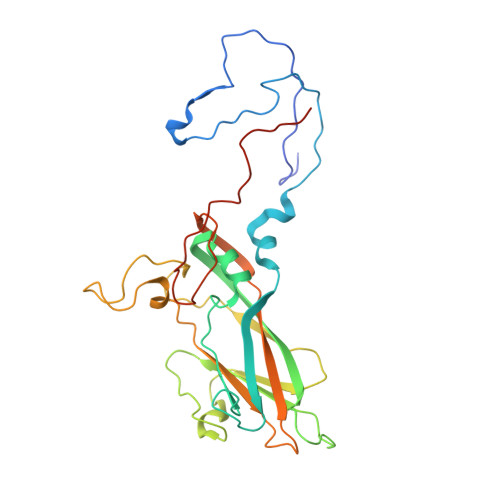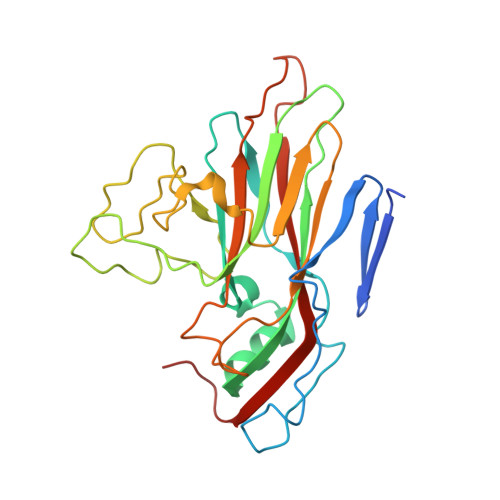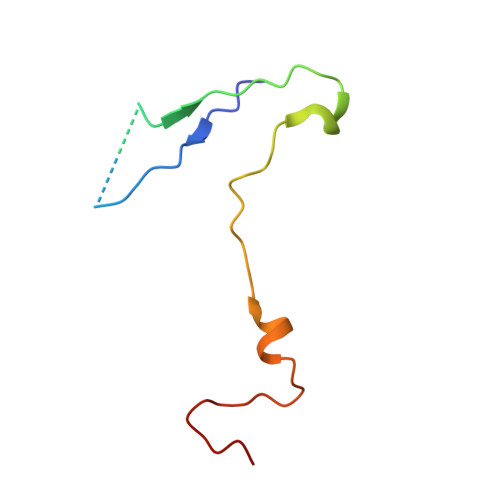Structures of Echovirus 30 in complex with its receptors inform a rational prediction for enterovirus receptor usage.
Wang, K., Zhu, L., Sun, Y., Li, M., Zhao, X., Cui, L., Zhang, L., Gao, G.F., Zhai, W., Zhu, F., Rao, Z., Wang, X.(2020) Nat Commun 11: 4421-4421
- PubMed: 32887891
- DOI: https://doi.org/10.1038/s41467-020-18251-9
- Primary Citation of Related Structures:
7C9S, 7C9T, 7C9U, 7C9V, 7C9W, 7C9X, 7C9Y, 7C9Z - PubMed Abstract:
Receptor usage that determines cell tropism and drives viral classification closely correlates with the virus structure. Enterovirus B (EV-B) consists of several subgroups according to receptor usage, among which echovirus 30 (E30), a leading causative agent for human aseptic meningitis, utilizes FcRn as an uncoating receptor. However, receptors for many EVs remain unknown. Here we analyzed the atomic structures of E30 mature virion, empty- and A-particles, which reveals serotype-specific epitopes and striking conformational differences between the subgroups within EV-Bs. Of these, the VP1 BC loop markedly distinguishes E30 from other EV-Bs, indicative of a role as a structural marker for EV-B. By obtaining cryo-electron microscopy structures of E30 in complex with its receptor FcRn and CD55 and comparing its homologs, we deciphered the underlying molecular basis for receptor recognition. Together with experimentally derived viral receptor identifications, we developed a structure-based in silico algorithm to inform a rational prediction for EV receptor usage.
- CAS Key Laboratory of Infection and Immunity, CAS Center for Excellence in Biomacromolecules, Institute of Biophysics, Chinese Academy of Sciences, Beijing, 100101, China.
Organizational Affiliation:






















